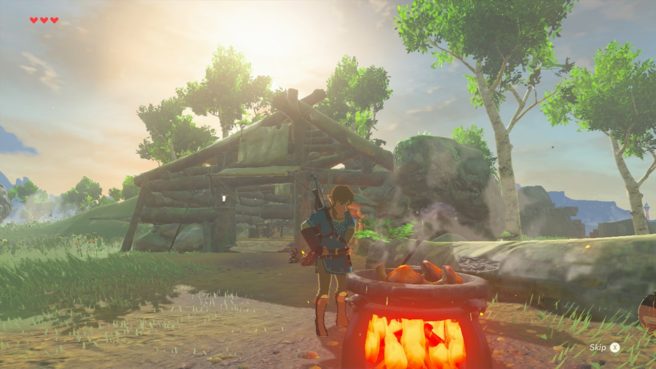Aonuma on Zelda: BotW – Link jumping, art style, Guardians, open world, breaking traditions
This information comes from Zelda producer Eiji Aonuma regarding Zelda: Breath of the Wild via a TIME interview…
On letting Link jump manually…
Aonuma: We never really questioned it, we just created a game where there wasn’t a jump function. But we always had an auto-jump. In order to create an environment where we implement an auto-jump function, we had to make sure players always know where to go. We basically created an environment where, say there’s a cliff, a wall, then we created a wider area where users could approach and then auto-jump.
In Breath of the Wild, where you have an environment where things are rounder and rockier, it’s really hard to create that auto-jump function. That meant we had to let it go. We really wanted for Link to climb up things, but it wasn’t fun to create an auto-climb function. By contrast, it was really fun to have Link actually grab on things, and then being able to control that climbing motion. That’s why we needed to introduce jumping, so Link could jump up on things and start climbing.
Back when we were working on this, I wasn’t 100% sure players would be happy with the change, because it’s been such a big part of the franchise for such a long time. But after this E3 experience, I’ve gained confidence it was the right decision.
On whether it was his goal from the beginning to upend the series’ conventions…
Before starting development of Breath of the Wild, I began from the assumption that I had to break the conventions of Zelda. When I was developing The Legend of Zelda: Wind Waker HD, that’s around the time I started thinking they needed to change. Wind Waker‘s graphics style led to creating Breath of the Wild‘s art style, and when I look back at Wind Waker now, I think ‘Oh yeah, that’s kind of outdated.’
On whether the painterly gouache and en plein air art direction originated with him…
We actually decided among director [Hidemaro Fujibayashi], the art director and myself. One of the first reasons we decided to do this was because while developing Wind Waker HD, we realized that creating this animation style was the best way to go about identifying the elements we wanted users to look for and find. So when we created this large, vast world, we knew that a style like that was going to be necessary to show users what they needed to see. And then the open air concept came from Bill Trinen, our product marketing manager at Treehouse. My main point was that we wanted to create a clear element in this large world.
On the idea for the Guardians…
When I request something be put in the game, there’s usually a reason why I want to see that element. In the trailer I created two years ago, there was a scene where the Guardians chased after Link. In creating a huge world, I went back to the first Zelda title. And I wanted to see an enemy like Octorok. Octorok to me when I was playing felt really large. That’s why the first enemy I created for the game was the Guardian.
But then just creating a large octopus is kind of gross, so we decided to take the more sci-fi, technology route, and that’s where the visual for the Guardian comes from. And that decision leads into the storyline, and influenced many other elements we added to the game. It’s not like I do this every time, but in most titles I try to come up with something unique as a concept and throw it at the team and have them run with it. That kind of spreads like a wildfire, and then people on the team come up with new ideas based on that concept.
On the hardest thing designing an open world…
This is definitely the first time we’ve created a game this large. We didn’t know where to start. So it happened to be there was a team that was working on creating a larger world. And this team was a group of younger developers. So we had our old programmers from the Zelda team take a step aside, so we could introduce this new group of programmers.
But then these new, younger developers had no clue about how past Zeldas had been created. The group of new staff actually would ask us, like ‘Well I know that it’s been done, traditionally, in other Zelda titles, but why does it have to be that way?’ And among those questions there were some I just couldn’t answer, that I didn’t know the answer to myself. That was because I just took those things on as a tradition, and I didn’t really know why the tradition existed.
When you think about it, maybe those things really didn’t need to be there in the modern world, those traditions. So I started destroying these traditions I’d inherited in the series one by one. But it’s a process that takes a lot of time. And because we were destroying everything we’d done in the past, and rebuild new ideas from the ground up, that was the hardest thing, and it’s really taken a long time to create the thing I most wanted to create.
